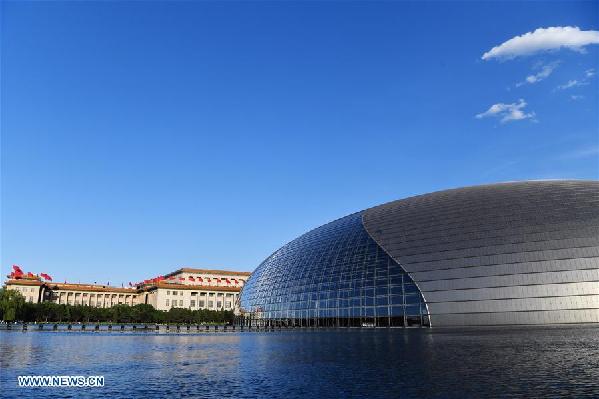当前位置: Language Tips> 新闻热词> Society Hot Word 社会
分享到
4月10日,北京大学统计科学中心和北京大学光华管理学院环境统计课题组发布了《“2+31”城市2013-2017年区域污染状况评估》,报告分析了京津冀及周边地区33个城市六种常规污染物浓度变化趋势。
 |
|
The National Centre for the Performing Arts and the Great Hall of the People under a blue sky in 2017. [Photo/Xinhua] |
The concentration of hazardous ozone in the Beijing-Tianjin-Hebei region and surrounding areas has been increasing, even though other major air pollutants have been declining, according to a report published on Tuesday.
4月10日发布的报告称,京津冀及周边地区的有害臭氧浓度持续上升,其他主要污染物浓度有所下降。
这里提到的六种常规污染物包括,PM2.5、PM10 、二氧化硫(sulfur dioxide)、二氧化氮(nitrogen dioxide)、一氧化碳(carbon monoxide)和臭氧(ozone)。
报告中绝大部分城市年均臭氧浓度(average ozone concentration)一致上升且幅度较大。京津冀地区和晋鲁豫20市8小时臭氧浓度整个夏季的平均值基本都超过了中国和世界卫生组织100微克/立方米的标准。
报告指出,除张家口、晋城外,其余城市PM2.5浓度从2014年至2017年总体下降趋势明显(the density of PM2.5 has seen a noticeable decline from 2014 to 2017),北京、天津、廊坊的改善幅度最大。
臭氧浓度过量会引发呼吸道刺激(respiratory tract irritation)、破坏身体免疫系统(damage the body's immune system)并影响肺功能(affect lung function)。
报告认为,夏季臭氧污染(ozone pollution)已经成为京津冀大气污染的一个突出问题。报告建议,对京津冀地区乃至全国主要污染区域设定臭氧改善的具体数值目标(set a target for ozone concentration),以便采取有力措施及时遏制其增长的趋势、有效降低臭氧浓度,避免面临颗粒物和臭氧污染双重污染的局面(avoid the simultaneous occurrence of particulate matter pollution and ozone pollution)。
【相关词汇】
可吸入颗粒物 inhalable particulate
工业粉尘 industrial dust
建筑扬尘污染 dust pollution
户外土石方作业 outdoor earthwork
挥发性有机物 Volatile Organic Compounds(VOC)
机动车污染物排放 pollutant emissions from motor vehicles
(中国日报网英语点津 马文英)
上一篇 : 净网护苗秋风三大专项行动深入开展
下一篇 :
分享到
关注和订阅

电话:8610-84883645
传真:8610-84883500
Email: languagetips@chinadaily.com.cn